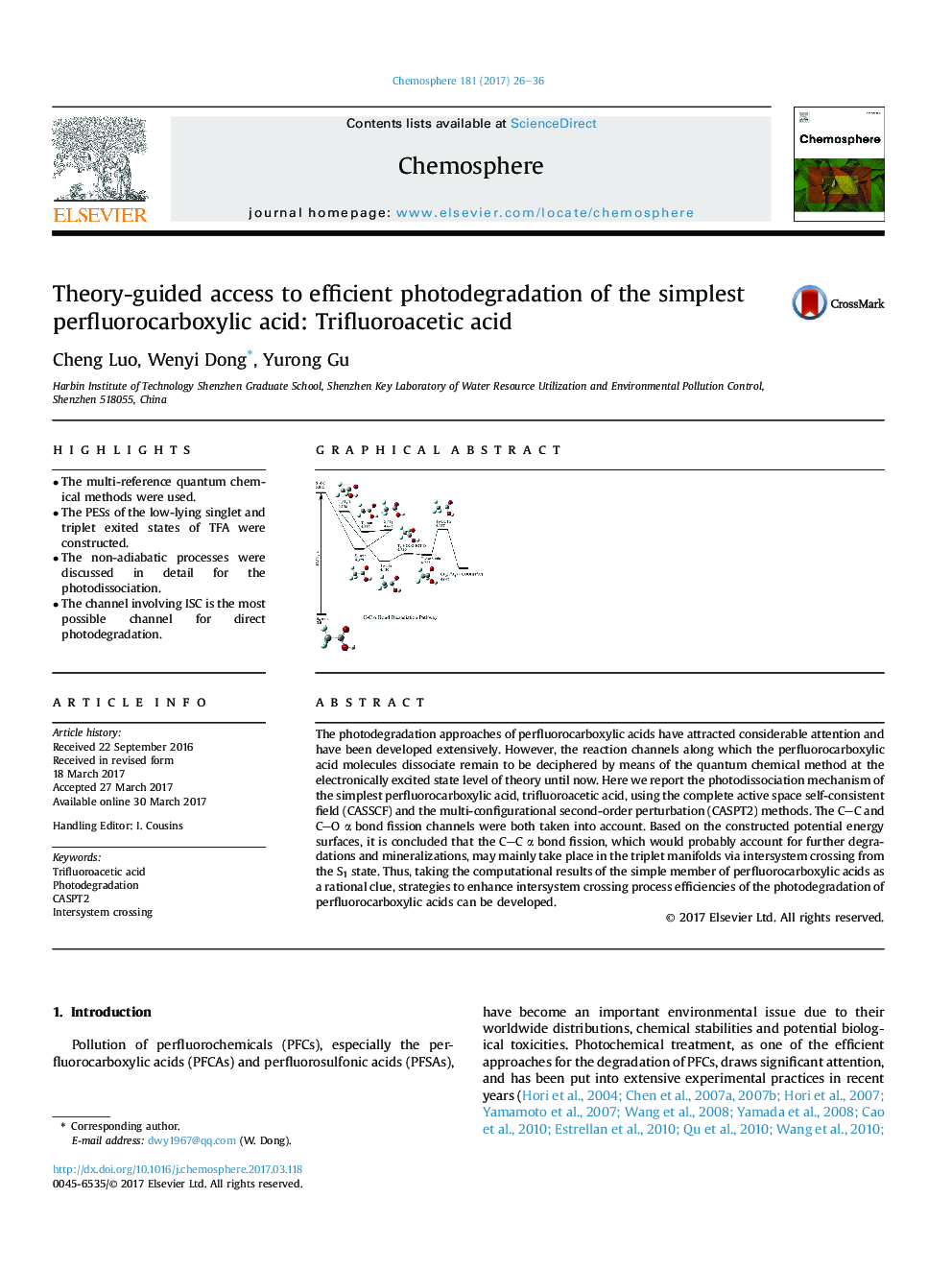| Article ID | Journal | Published Year | Pages | File Type |
|---|---|---|---|---|
| 5747125 | Chemosphere | 2017 | 11 Pages |
â¢The multi-reference quantum chemical methods were used.â¢The PESs of the low-lying singlet and triplet exited states of TFA were constructed.â¢The non-adiabatic processes were discussed in detail for the photodissociation.â¢The channel involving ISC is the most possible channel for direct photodegradation.
The photodegradation approaches of perfluorocarboxylic acids have attracted considerable attention and have been developed extensively. However, the reaction channels along which the perfluorocarboxylic acid molecules dissociate remain to be deciphered by means of the quantum chemical method at the electronically excited state level of theory until now. Here we report the photodissociation mechanism of the simplest perfluorocarboxylic acid, trifluoroacetic acid, using the complete active space self-consistent field (CASSCF) and the multi-configurational second-order perturbation (CASPT2) methods. The CC and CO α bond fission channels were both taken into account. Based on the constructed potential energy surfaces, it is concluded that the CC α bond fission, which would probably account for further degradations and mineralizations, may mainly take place in the triplet manifolds via intersystem crossing from the S1 state. Thus, taking the computational results of the simple member of perfluorocarboxylic acids as a rational clue, strategies to enhance intersystem crossing process efficiencies of the photodegradation of perfluorocarboxylic acids can be developed.
Graphical abstractDownload high-res image (131KB)Download full-size image
